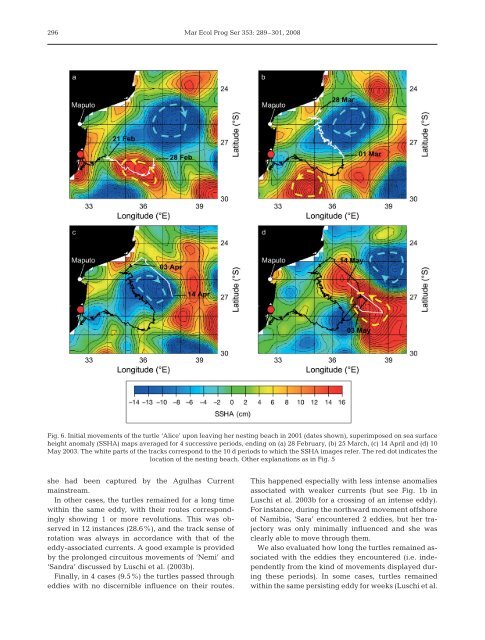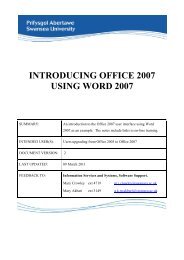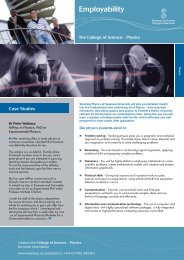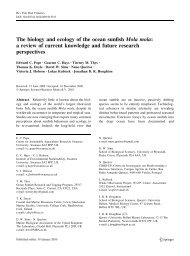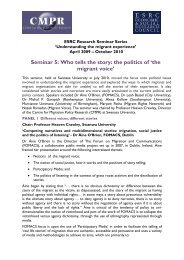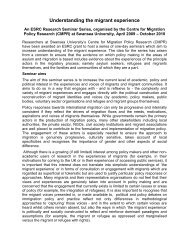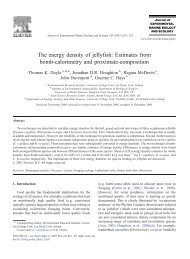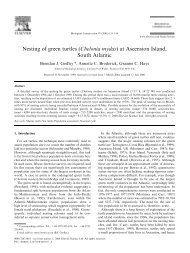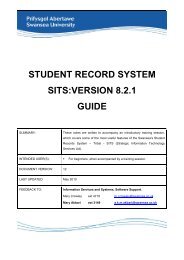Marine Ecology Progress Series 353:289
Marine Ecology Progress Series 353:289
Marine Ecology Progress Series 353:289
Create successful ePaper yourself
Turn your PDF publications into a flip-book with our unique Google optimized e-Paper software.
296<br />
Mar Ecol Prog Ser <strong>353</strong>: <strong>289</strong>–301, 2008<br />
Fig. 6. Initial movements of the turtle ‘Alice’ upon leaving her nesting beach in 2001 (dates shown), superimposed on sea surface<br />
height anomaly (SSHA) maps averaged for 4 successive periods, ending on (a) 28 February, (b) 25 March, (c) 14 April and (d) 10<br />
May 2003. The white parts of the tracks correspond to the 10 d periods to which the SSHA images refer. The red dot indicates the<br />
location of the nesting beach. Other explanations as in Fig. 5<br />
she had been captured by the Agulhas Current<br />
mainstream.<br />
In other cases, the turtles remained for a long time<br />
within the same eddy, with their routes correspondingly<br />
showing 1 or more revolutions. This was observed<br />
in 12 instances (28.6%), and the track sense of<br />
rotation was always in accordance with that of the<br />
eddy-associated currents. A good example is provided<br />
by the prolonged circuitous movements of ‘Nemi’ and<br />
‘Sandra’ discussed by Luschi et al. (2003b).<br />
Finally, in 4 cases (9.5%) the turtles passed through<br />
eddies with no discernible influence on their routes.<br />
This happened especially with less intense anomalies<br />
associated with weaker currents (but see Fig. 1b in<br />
Luschi et al. 2003b for a crossing of an intense eddy).<br />
For instance, during the northward movement offshore<br />
of Namibia, ‘Sara’ encountered 2 eddies, but her trajectory<br />
was only minimally influenced and she was<br />
clearly able to move through them.<br />
We also evaluated how long the turtles remained associated<br />
with the eddies they encountered (i.e. independently<br />
from the kind of movements displayed during<br />
these periods). In some cases, turtles remained<br />
within the same persisting eddy for weeks (Luschi et al.


